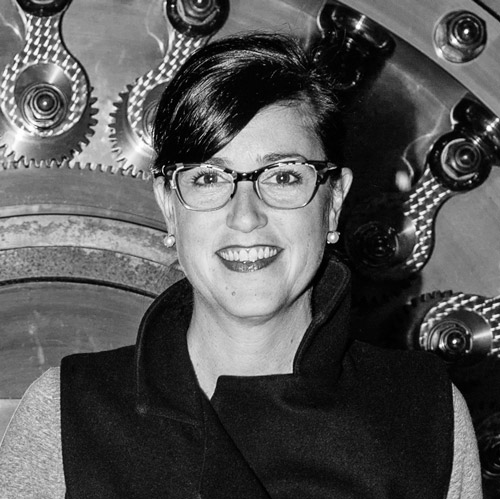As the vice president of global workplace and enterprise services for pharmaceutical giant Merck, Don Watson certainly has a lot to handle. With nearly 300 sites covering more than 30 million square feet, he oversees an extensive portfolio that requires him to remain highly organized. As a result, it should come as no surprise that he applies that organization to Merck.
Part of that organization, Watson explains, is anticipating the future needs of the company. Watson’s recent focus has been determining future workplace needs and analyzing how he can create it. He refers to his vision of the workplace of the future as a “partnered workplace.”
The origin of this concept was realized within his department. “We garner a great understanding of what our different divisional colleagues’ business strategies are and then work with them to match [those strategies] to the right location or the right workplace environment,” Watson says.
Then, to create this partnered workspace, Watson and his team had to define the needs of each department. For example, the research and development team requires an environment that captures the right balance of collaborative office and meeting space, pairing those spaces with innovative technology and solid, functional laboratory space to support the science. On the other hand, Merck’s global human health sales group has a focus on the office worker—breaking down the traditional office layout in favor of an activity-based layout that doesn’t tie employees to a desk. The layout now fosters greater collaboration, puts technology at employee fingertips, and allows them to conduct productive business meetings.
Once the internal data was collected, Watson and his team turned to external trends to determine how the space would appear. They researched innovative trends from others in the pharmaceutical and biotech industry and determined what benchmarks were being set by big names in the IT space.
The next step in implementing the partnered workplace was acting upon its key term: partnered. “[We went on a] road show discussion to get good, honest feedback about [Merck’s] current facilities,” he says, adding that speaking with clients about design in the early stages of the project has contributed immensely to client satisfaction at unveiling.
An open dialogue with clients about the workplace system—in terms of what was missing, what needs improvement, and what was possible—is one of the reasons Watson says this project has been so successful. “That ‘wow’ factor is now really there because everyone’s on the same footing as to what we’re building and what they’re going to move into much earlier in the process,” Watson says.
Another aspect taken into account is location, Watson says. Cities such as Boston, San Francisco, London, and Shanghai come with unique personalities, trends, and industry centers that matter just as much as the business’ needs when it comes to the building. Watson works to ensure that each new facility has the best opportunity to collaborate with neighboring businesses and attract stellar talent.
Watson recently faced this kind of synergy between function, location, and design during an overhaul of the Merck sales organization facility in Sweden. The Scandinavian country is home to Stockholm Science City, which aims to bring together academia, healthcare, and life science industries to the largest science park in Northern Europe. Since 1990, Merck’s facility had been located in Sollentuna, which is just outside of Stockholm. Watson’s team worked with the sales organization to move that facility into the heart of Stockholm, as the city would be able to provide easy access to public transportation and would position Merck closer to the hospitals and government agencies it is working with.
While the move provided more geographically, the size of the office saw a reduction from roughly 136,000 square feet to 21,000 square feet. To accommodate the needs of the people who would be working there, the new offices were designed to be an activity-based work environment—fitted with a great deal of open lighting and seating, as well as copious meeting spaces with new technology to drive productivity in meetings with customers and between departments. All of these changes work in concert to align the facility with Merck’s customer-centric business model while fostering internal innovation and teamwork.
“We still, at our heart, believe that the best collaboration, innovation, and discussion comes when you have the majority of your folks coming into a site and being able to work together. So, we want to design facilities that encourage that. We want them to be bright, vibrant locations, where people do want to come into work,” Watson explains.
The activity-based workplace, such as the design employed in the Stockholm office, turns the traditional office layout on its head to create a platform for innovation, which can help Merck financially. “You get the long-term benefit of reduced square footage,” he says, adding that these partnered workspaces directly reduce overhead costs.
No longer the formerly established floor of cubicles outfitted with desktops, the activity-based workplace has no assigned seats or enclosed offices. Instead, it focuses on creating communal spaces for people to work together. This not only fosters collaboration, but it also removes many of the incidental costs of resetting space when someone is promoted, brought onboard, or changes location. Further savings include the reliance on the more mobile laptop, as this doesn’t require the same wiring as desktops.
Watson’s goals for the partnered workplace aren’t limited to collaboration within one office. Eventually, he would like to see all of Merck’s locations working closer with one another. And he’s off to a good start. So far, with Watson’s aid, Merck has been able to make major strides in this direction—from refurbishing existing space at its West Point facility to the upcoming development of a new partnered workplace for its Global Human Health US headquarters in Kenilworth, New Jersey. These are just the initial steps in the larger plan for completely partnered workspaces.
Watson still has an office (with a desktop monitor he’s never turned on), but he always works from his laptop or mobile. He says it’s okay that he still has that office, though. “It’s a great reminder for me that we still have a lot of work to do.”


